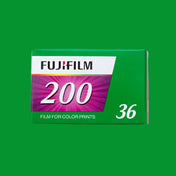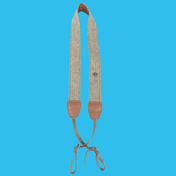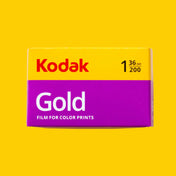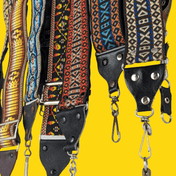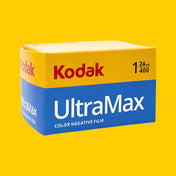Top 10 Tips for Modern Vintage Photography Success
Vintage photography has a timeless charm that captivates and inspires photographers of all levels. Its ability to transport us back to another era, evoking nostalgic emotions and a sense of history, is truly remarkable. In recent years, modern vintage photography has gained significant popularity, merging old-world charm with contemporary techniques. If you're looking to achieve stunning modern vintage photographs, you've come to the right place. In this guide, we'll explore 10 tricks that will help you master the art of modern vintage photography.
Understanding the Vintage Aesthetic in Photography
To truly appreciate modern vintage photography, it's important to first understand the vintage aesthetic in photography. Vintage photography refers to a style that mimics the look and feel of photographs from a bygone era, typically between the 1940s and 1970s. It embraces the aesthetic of old photos, characterised by a time period when film photography was predominant. The vintage look is often associated with a nostalgic, nostalgic effect, adding depth, character, and an aesthetic look, creating images that feel authentic to the time period they represent.
The Charm of Retro Vintage Photography
The charm of vintage photography lies in its ability to transport viewers to another time period. Vintage photographs have a nostalgic effect, taking us back to a time when film photography was prevalent. These images capture moments in a way that is reminiscent of days gone by, preserving memories with a touch of nostalgia. Vintage photography adds character and a sense of warmth to images, creating a captivating visual experience. When we look at vintage photographs, we feel a connection to the past, appreciating the artistry and craftsmanship that went into creating these images.

Why Modern Vintage Photography is Trending
In today's digital age, modern vintage photography is more popular than ever. It blends old-world charm with contemporary creative techniques, resonating with audiences seeking a blend of nostalgia and modern aesthetics. Modern vintage photographs evoke a sense of longing for the past, offering a unique storytelling approach that appeals to a wide range of audiences. The resurgence of vintage photography signifies a desire for timeless, authentic visuals in a digital era. By combining modern photographs with a vintage feel, photographers are able to create images that have both an aesthetic look and a nostalgic appeal.
The Signature Traits of Vintage Photos
Vintage photos possess several signature traits that give them their iconic look. One of the key elements of vintage photography is the vintage look itself, which encompasses various elements such as old cameras, colour cast, and grainy film. Vintage photos often have a distinct colour cast, giving them a faint yellow tint or other subtle colour shifts. The use of grainy film adds texture and character, creating a nostalgic ambiance. These signature traits are essential in achieving a stunning modern vintage look in your photographs.
The Role of Colours and Tones
Colours and tones play a crucial role in defining the vintage aesthetic in photography. Vintage photos often showcase warm, muted colours, evoking a sense of nostalgia. By manipulating colour temperature and utilising different colour styles, photographers can create images that have a vintage look reminiscent of the past. Techniques such as adding sepia or tint can further enhance the vintage feel, adding depth and character to your photos. Understanding the role of colours and tones is essential in achieving the nostalgic charm of vintage photos.

The Importance of Texture and Noise
Texture and noise add a unique quality to vintage photographs, contributing to their aged look and feel. Vintage photography often embraces film grain noise, which adds a certain charm and nostalgia to images. The presence of texture and noise can create a hazy effect, reminiscent of older photography techniques. These imperfections, such as film grain noise and an aged look, add visual interest and enhance the vintage aesthetic. Intentionally introducing texture and noise into your photos can elevate them to a new level, capturing the essence of vintage photography.
Techniques to Achieve a Vintage Look with Modern Tools
While vintage photography is synonymous with film, it is still possible to achieve a vintage look using modern digital photography. By leveraging modern tools and techniques, photographers can recreate the vintage effect digitally, with impressive results. This opens up a new world of possibilities for capturing stunning vintage photographs. In the following sections, we will explore several techniques to help you achieve a vintage look using modern tools in your digital photography.
Manipulating Saturation and Contrast
Manipulating saturation and contrast in your photographs is a key step in achieving a vintage look. Adjusting saturation levels can help evoke the colours and tones commonly associated with vintage photography, allowing you to recreate the nostalgic feel of colour slide film. Similarly, manipulating contrast can create a vintage aesthetic by emphasising the nostalgic elements within your images. By skillfully adjusting saturation and contrast, you can enhance the vintage appeal of your photographs, giving them a timeless, retro look.

Adding an Authentic Grainy Texture
To truly emulate the vintage aesthetic, consider adding an authentic grainy texture to your photographs. Embracing film grain noise, either through analog cameras or digital filters, can add depth, character, and a nostalgic feel to your images. The presence of grainy texture enhances the vintage look, giving your photos the appearance of being captured with film. By incorporating this authentic grainy texture, you can elevate your modern photographs to vintage masterpieces, evoking the nostalgia and charm of analog photography.
The Art of Vignetting
Another technique that adds a vintage touch to your photographs is utilising vignetting. Vignetting refers to the deliberate darkening of the corners of an image, which draws focus to the subject and creates a vintage, retro charm. This technique can be achieved naturally through older lenses or replicated digitally using photo editing software. Light leaks, another common vintage effect, can also be introduced to create a dreamy, nostalgic ambiance. By skillfully incorporating vignetting, light leaks, and utilising soft blur, you can enhance the vintage effect in your photographs, capturing the viewer's attention and creating stunning images.
The Impact of Subjects and Composition in Vintage Photography
Choosing the right subjects and utilising effective composition techniques are essential elements in vintage photography. A vintage effect is best achieved when subjects align with the vintage aesthetic, such as retro props or scenery. Paying attention to composition techniques, such as framing, shutter speed, and aperture, can further enhance the vintage feel, resulting in captivating images that transport viewers to another time period.

Choosing the Right Subjects for a Vintage Effect
When aiming for a vintage effect, selecting the right subjects is crucial. Vintage photography often incorporates props and scenery that evoke a sense of nostalgia, transporting viewers back in time. Look for vintage props, retro settings, or iconic elements from the time period you wish to capture. By choosing subjects that align with the vintage aesthetic, you can enhance the nostalgic feel and authenticity of your vintage photographs, creating images that truly reflect the style and charm of the past.
Framing and Composition Techniques
Framing and composition techniques play key roles in vintage photography, helping to create visually engaging images. Consider the following tips when framing and composing your shots:
- Utilise framing techniques, such as leading lines or frames within frames, to draw focus to your subject and create a vintage aesthetic.
- Experiment with different shutter speeds and apertures to achieve the desired level of blur and depth of field, adding a nostalgic touch to your photos.
- Pay attention to the rule of thirds, balancing elements within your frame to create a visually captivating composition.
- Consider using a tripod to ensure precise framing, especially when working in low light conditions or utilizing longer shutter speeds.
Creating Vintage Effects in Post-Production
Post-production is an essential step in creating stunning modern vintage photographs. Using photo editing software, you can apply various vintage effects to enhance the aesthetic of your images. From adjusting colour tones to adding filters and presets, post-production offers endless possibilities for creating vintage masterpieces. In the following sections, we'll explore popular software and applications for vintage effects, as well as the role of filters and presets in achieving the perfect vintage look.
Popular Software and Applications for Vintage Effects
When it comes to vintage photo editing, there are several popular software and applications that can help you achieve stunning vintage effects. Some of the most widely used tools include Adobe Lightroom, Adobe Photoshop, and various photo editing apps. These software and apps offer a wide range of vintage filters and editing tools, allowing you to transform your photos into nostalgic, retro masterpieces with just a few clicks. Whether you're a beginner or an advanced photographer, these tools can help you bring your vintage photography vision to life.
The Role of Filters and Presets
Filters and presets play a key role in vintage photography, enabling photographers to apply specific styles and effects with ease. Popular photo editing software, such as Photoshop Express, offers a wide selection of vintage filters and presets, making it simple to achieve the desired vintage feel in your photographs. These filters and presets allow you to experiment with different colour tones, textures, and aged looks, instantly transforming your digital images into vintage masterpieces. With just a few clicks, you can elevate your modern photographs to evoke the timeless charm and aesthetic of vintage photography.
Tips for Modern Vintage Photography Skills
Enhancing your vintage photography skills requires continuous learning and experimentation. By studying famous photographers and exploring older styles of photography, you can gain inspiration and guidance for your own vintage photography journey. Additionally, experimenting with different techniques, both in-camera and during post-processing, allows you to refine your skills and develop a signature style. Combining vintage and modern elements in your photography can also elevate your images to the next level, creating captivating visuals that merge the best of both worlds.
Learning from Past Eras
To truly enhance your vintage photography skills, draw inspiration from photographers of the past. Study the works of famous photographers who specialized in vintage styles, paying attention to their techniques, use of light, and subject choices. Additionally, consider experimenting with older cameras or exploring the styles prevalent during specific time periods in photographic history. By immersing yourself in the aesthetics and techniques of the past, you can expand your vintage photography skills and create images that capture the essence of vintage photography.
Experimenting with Different Techniques
Don't be afraid to step outside your comfort zone and experiment with different techniques in your vintage photography. Whether it's utilizing vintage lenses, capturing life shots with old cameras, or exploring various editing techniques in Lightroom, embracing experimentation is key to honing your skills. By trying new techniques, you'll gain a better understanding of how to achieve your desired vintage look. Be open to learning, evolving, and pushing the boundaries of what's possible with modern vintage photography.
Combining Vintage and Modern Elements
Taking vintage photography to the next level involves combining vintage and modern elements. Bring the best of both worlds together by incorporating vintage props, settings, or styling into your modern photographs. This digital analog synthesis creates a captivating visual experience, blending old-world charm with contemporary creativity. By combining vintage and modern elements, you can push the boundaries of traditional vintage photography, creating images that are uniquely yours and resonate with audiences seeking a fresh, artistic approach.
How Can Vintage Photography be Adapted for Modern Platforms?
Vintage photography is not limited to physical photo paper, as it can also adapt to modern platforms, including social media and digital photography. With the rise of photo-sharing platforms, such as Instagram, vintage photography has found a new home, allowing photographers to seamlessly showcase their stunning vintage images. When adapting vintage photography for modern platforms, consider the styling and presentation of your images. Think about how they will look within the context of the platform, whether you're capturing architectural images, still life, or portraits. By carefully curating and styling your vintage photographs, you can create an impactful presence on modern platforms, captivating audiences with your nostalgic and visually appealing images.
What elements and techniques are essential for achieving a modern vintage look in photography?
To achieve a modern vintage look in photography, it is essential to incorporate elements such as vintage props, soft lighting, muted colours, and vintage-inspired editing techniques like adding grain or vignettes. Additionally, using vintage-style clothing or settings can further enhance the overall aesthetic.
Conclusion
In conclusion, vintage photography continues to capture our hearts with its timeless charm and nostalgic appeal. By understanding the aesthetics of vintage photography and implementing modern techniques, you can create stunning images that stand out from the crowd. Remember to play with colours, tones, and textures to achieve that authentic vintage look. Pay attention to your subjects and composition, as they play a vital role in capturing the essence of the past. And don't forget to experiment and have fun with different techniques to enhance your skills. Vintage photography has found its place in the modern world, and by adapting it to various platforms, you can showcase your creativity and connect with a wider audience. So grab your camera and start capturing the beauty of the past in the present.






